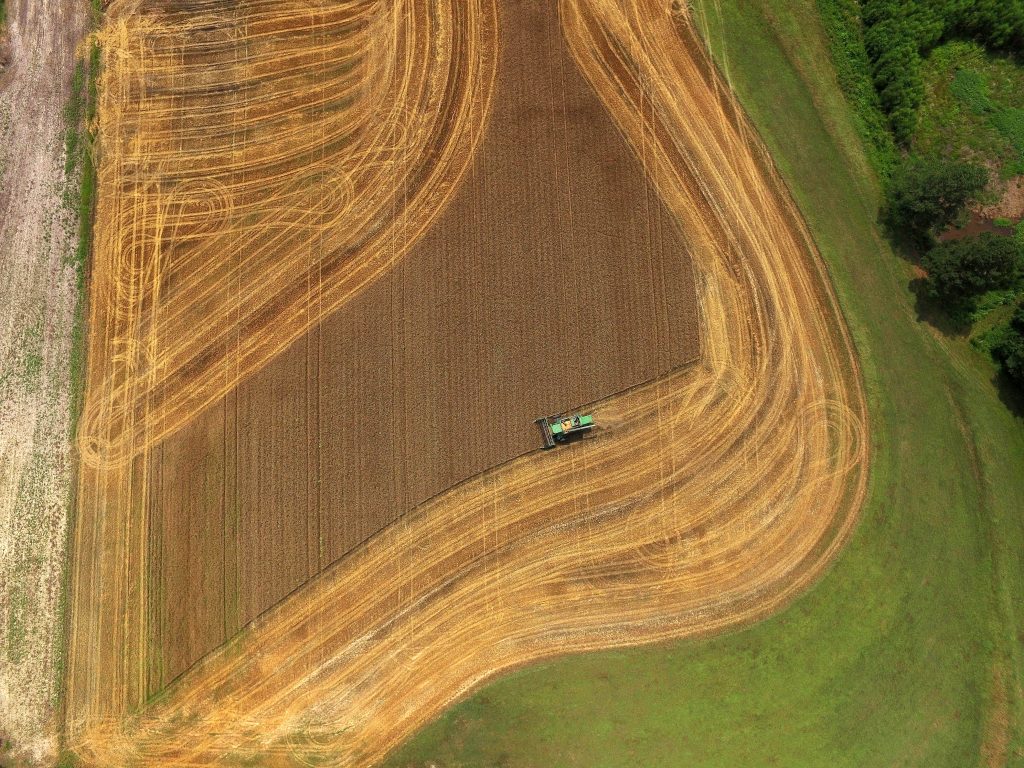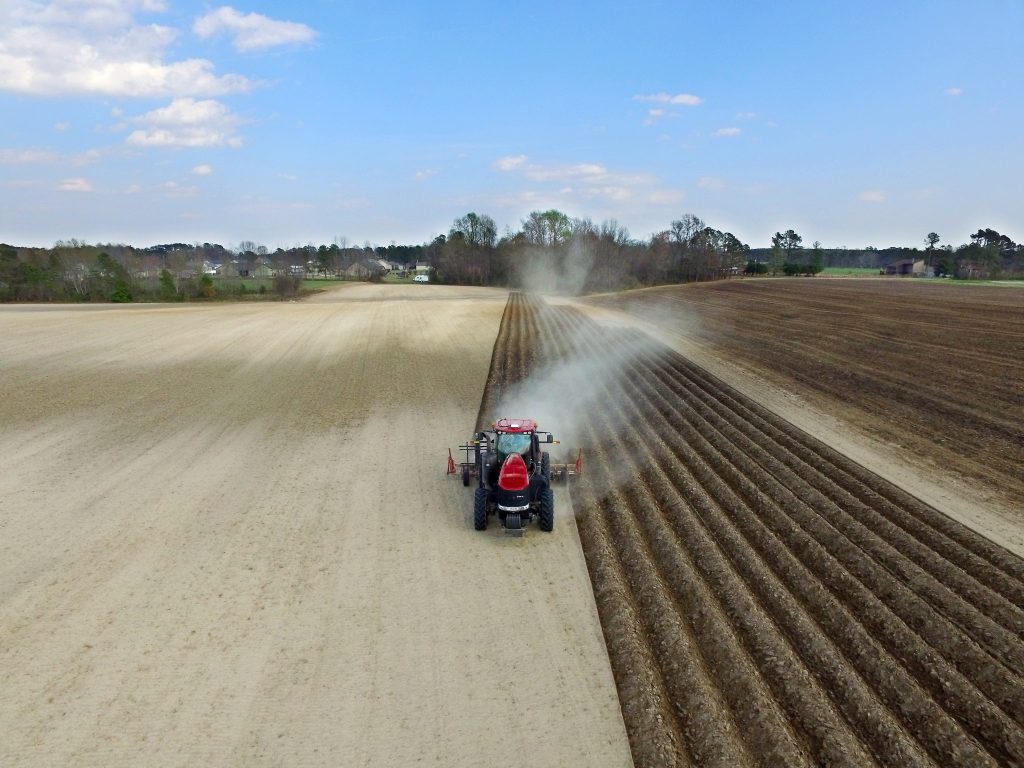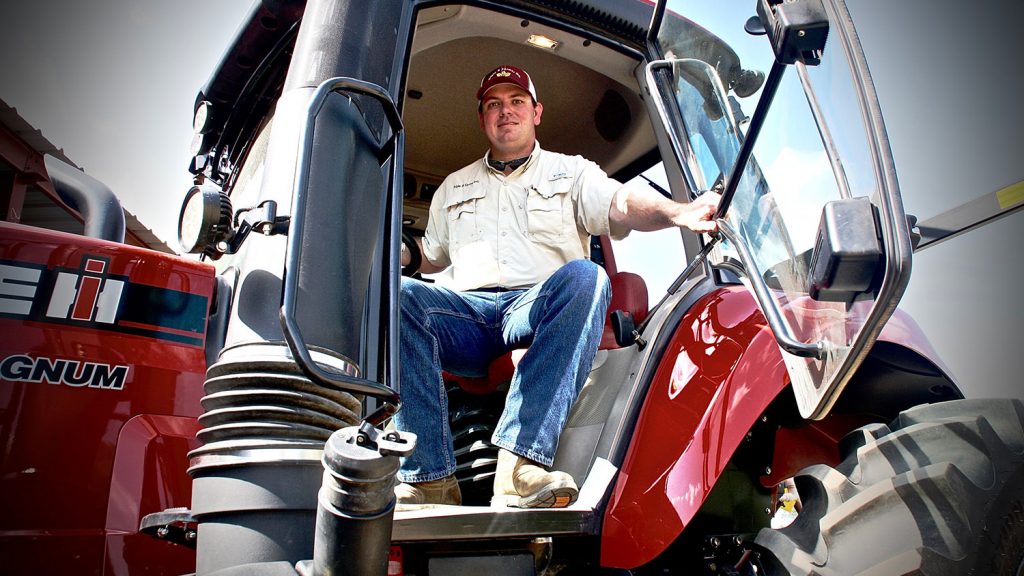Robots and AI and Drones, Oh My!

When CALS alumnus and tobacco grower Brandon Batten needed to streamline his baling process 10 years ago, he designed and built the automation himself. His homemade hydraulic-powered conveyors, scales and overhead chain-pulley system cut a day-long process down to an hour.
Now, Batten uses a drone to scout the fields of his 600-acre Johnston County farm. He logs in to a smartphone app every morning to track year-to-year irrigation, rainfall and fertilization data for each field. And he can program his tractor to drive itself, accurate down to the half-inch.
Tech-powered precision agriculture is a big part of how many growers are strategizing to survive in an increasingly competitive global market, where they’re expected to produce more food even as land is lost to urbanization and time is lost to paperwork.
“When it comes to industry trends, we can see a transition of the machine-systems and agricultural engineering areas to more high-tech precision agriculture applications,” said Garey Fox, head of the Department of Biological and Agricultural Engineering.
CALS alumni and partners are leading the way — and looking ahead.
“Just scratching the surface”

Agricultural innovation is crucial to the North Carolina economy. According to NC State Extension economist Mike Walden, farming has maintained a higher level of significance in North Carolina than the nation as a whole. Agriculture and agribusiness make up an $84 billion a year industry in North Carolina, contributing one-sixth of the state’s income and employees.
Batten was named the 2017 Innovative Young Farmer of the Year by Tobacco Farm Life Museum, based on his creative thinking and savvy tech implementation. This February, a grant from NC AgVentures, NC State Extension and NC State University allowed him to purchase a drone. When rain swamped his fields right after he transplanted tobacco, Batten used the drone to count plants and make localized fertilization and input decisions to save his crop.
“I think we’re just scratching the surface of automation and technology on the farm, figuring out what technology like drones can do,” Batten said.
NC State Extension: A front-row seat

NC State Extension agents and specialists are among the first to see these changes roll across the state’s agricultural spectrum — and must keep up or lose their chance at impact.
“A huge part of being a good Extension worker is keeping up with industry and knowing what their needs are,” Extension specialist Bill Cline said. “You have to stay plugged in with your clientele.”
In his 30 years with Extension, Cline has seen the automation revolution of the berry industry, from mechanized color sorters in the late 1990s to the invention of “soft sorters” about 10 years ago. To weed out mushy, overripe blueberries, a cascading wall of the berries are plopped onto sensors that note how each berry hits and how high it bounces. When a berry doesn’t pass muster, a jet of air shoots it out of the cascade.
Smartphones have also transformed Extension work, Cline said, providing the ability to instantly send photos of an ailing plant, for example, rather than making the grower wait for an in-person diagnosis.
“That’s the thing that tickles me every day: when someone has a problem and we can pounce on it and make the solution clear very quickly, rather than farmers waiting days for a farm visit,” Cline said.
Looking ahead

So — with all these technological innovations transforming the farm — what’s next?
That, Batten said, is the “million dollar question.” Technology use will be a given, but some of the more striking changes may lie in human factors, Batten said.
“I think as the number of farmers continues to decline, you’re going to see a paradigm shift, where family farms are going to have to bring in outside help to keep the farm sustainable,” Batten said.
This will be a growing career track for young people interested in agriculture, Batten predicts: as farm managers who will need to know as much about global positioning systems as they do about fertilizer and irrigation.
For Cline, what’s next for farming overall is on a foundational level: water use and land use — and the potential scarcity of both.
“I think there’s a coming time where enough people will be competing with farmers for elbow room that that’s going to be the next big challenge,” Cline said.
All progress points in the same direction: increased efficiency.
“I’m a firm believer in work,” Batten said. “Sometimes you have to get out there and dig a ditch, but if there’s an easier way, that just makes more sense.”


